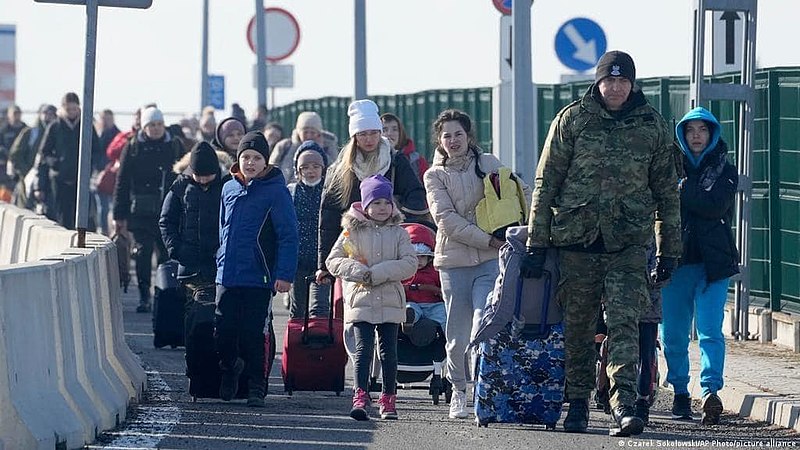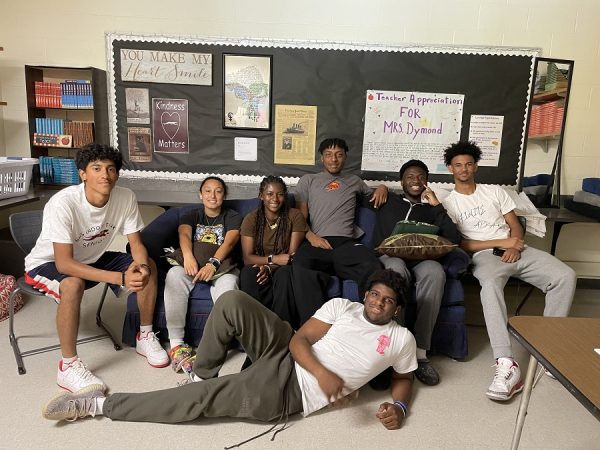Senior Editor Cameron Jacobs stresses the plight of fleeing refugees
On February 24th, 2022, Vladimir Putin confirmed what the world had been fearing for months and launched his invasion of Ukraine.
Over the course of the first week, Russian forces began their assault on all sides of the country. Troops flooded in from the annexed region of Crimea in the south, the Russian border in the east, and Belarus in the north.
The most destructive attacks came from the air though, as artillery strikes pounded major cities like Kyiv, Kharkiv, and Mariupol, among many others.
After the invasion’s start, Zelenskyy urged all able-bodied men to enlist in the Territorial Defense Force, and, on March 1st, made military service compulsory for all men aged 18-60.
And while the men flocked to the recruiting stations, millions of women, children, and elderly scrambled to flee their war-torn country.
Poland, being the only neighboring NATO-aligned country, has received the vast majority of those escaping, but Moldova, Hungary, and others have accepted over five million refugees thus far.
After the invasion, many Ukranians living in cities returned home to their towns in the hopes it may be safer there. One of these, a Ukrainian boy named Alex, sat nervously at a bus station in Kyiv with nothing but his suitcase in his hand.
“I am going home,” he said. “I feel horrible, our military is dying…I don’t know what to do.”
“How old are you Alex?” asked Sabrina Tavernese of the New York Times.
“I’m eighteen”.
While men like Alex return to their hometowns to inevitably join the fight, many of their families are forced to leave them behind.
Lines of cars stretch for miles at Poland-Ukraine border checkpoints as people listen to reports of the Russian atrocities taking place in their own backyards.
Waiting in one of these lines was a young family from Chernihiv who had driven for two days straight after hastily packing their things and heading west.
“We were tired of sitting in our basement, in a coffin,” said the father, Dmitriy. “Above my house was a war going on in full force.”
All along the border, families echoed these sentiments, some traveling across the entire country to escape war-torn cities.
“There were so many explosions, the children were terrified,” another father who traveled to the border told the New York Times. “We are just trying to find somewhere that is safe. Slava Ukraini!”
The families travel together knowing full well that the border will be the end of the road for military-aged men. Everyone has left someone behind, and the cries of wives, children, and families fill the air.
These stories seem like those from World War II documentaries, a distant memory that offers a bleak reminder of years past.
But it is happening as you read this.
It happens as we enjoy our morning commute, swerving to avoid potholes, not ordnance craters. It happens as we share laughs with loved ones, not having to worry if we won’t see them ever again.
It is so easy to just push this war into the back of our minds, to enjoy the familiarity of our day-to-day lives as we always have.
But stories like those of Alex and Dmitriy and the countless others who have had their world flipped upside down remind us that there are people behind the statistics we see on the news.
“Elderly are stuck in their houses, children are crying, my friends remain in the city,” a mother said through tears by the border crossing.
“Please communicate this, tell them to help, tell them to stop this now.”
For these people, this war is their entire lives now, and it is up to us and the rest of the world to continue to fight for those who have no way to fight for themselves.

I am a senior in Journalism 3. I decided to take journalism again because I love both writing articles and helping other students write theirs. My favorite...








